Related Research Articles
Pio, an ancient noble Italian family, was first mentioned by good authorities in the 14th century. After having long contended for the city of Modena with the House of Este, in 1336 they eventually agreed to renounce it, on condition that they retained the smaller domain of Carpi for themselves. They maintained control of Carpi for nearly 200 years and later acquired the minor fiefs of Sassuolo, Meldola, Sarsina, etc. Many members of the family were distinguished as condottieri, diplomats or ecclesiastics.
Oberto I Obizzo was an Italian count palatine and margrave and the oldest known member of the Obertenghi family.
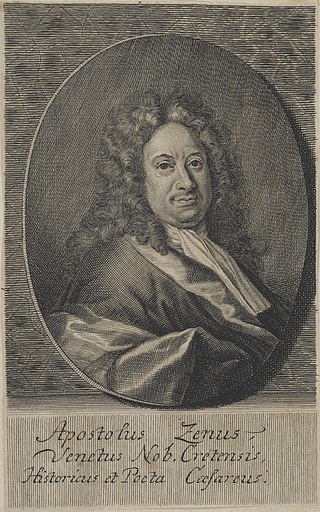
Apostolo Zeno was a Venetian poet, librettist, journalist, and man of letters.
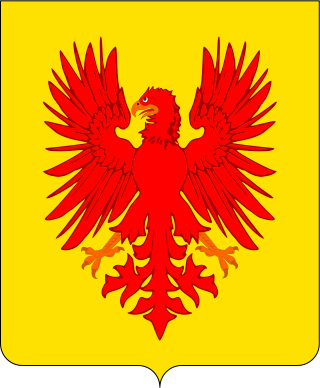
The da Polenta or Polentani were an old noble Italian family whose name derives from the Castle of Polenta near Bertinoro in Romagna.

Obizzo II d'Este was Marquis of Ferrara and Ancona.
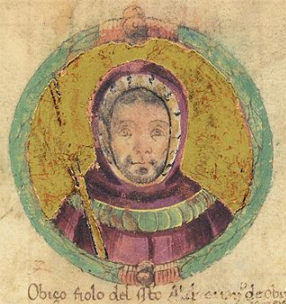
Obizzo III d'Este was the Marquess of Ferrara from 1317 until his death.
Ostasio III da Polenta was the last lord of Ravenna of the da Polenta family.
Obizzo da Polenta was an Italian nobleman and politician and the lord of Ravenna of the da Polenta family.
Aldobrandino da Polenta was the a lord of Ravenna of the da Polenta family.
Bernardino da Polenta was lord of Cervia from 1297 until his death. He was the son of Guido I da Polenta.
Bernardino da Polenta may refer to:
Guido III da Polenta was a lord of Ravenna, Italy and a member of the da Polenta family.

Ostasio II da Polenta was an Italian condottiero and lord of Ravenna.
Stephen the Posthumous was the posthumous son of King Andrew II of Hungary by his third wife, Beatrice d'Este. He was regarded as bastard son of infidelity by his much older half-brothers, including King Béla IV of Hungary, and was not allowed to receive ducal revenues from Hungary to which he would have been entitled as son of a Hungarian king.
Giovanni I Pico was an Italian nobleman and condottiero. He was lord of Mirandola and Concordia from 1399 until his death.
Riccobaldo of Ferrara was a medieval Italian notary and Latin writer of the Middle Ages, a chronicler, geographer and encyclopedist. He is sometimes known in the literature as Riccobaldo da Ferrara according to the Italian form, or as Riccobaldo Ferrarese or as Riccolbaldo
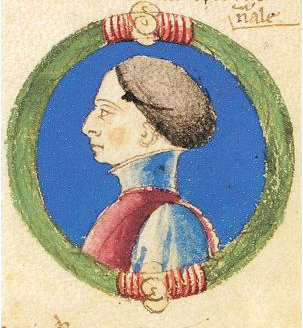
Rinaldo d'Este was a member of the House of Este.

Vittoria Farnese, also known as Vittoria, Princess of Parma, and by her married name Vittoria Farnese della Rovere, was an Italian noblewoman member of the House of Farnese and by marriage Duchess consort of Urbino from 1548 until 1574.
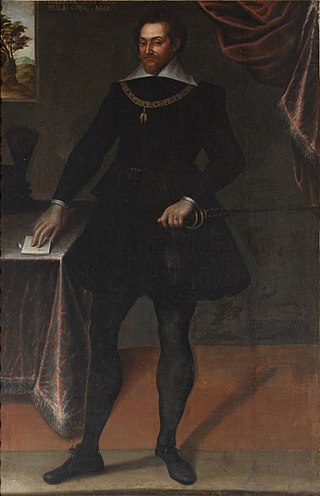
Federico II Pico della Mirandola was an Italian nobleman, last Count of Mirandola and Concordia (1592-1596) and first Prince of Mirandola and Marquis of Concordia (1596-1602).

The siege of Mirandola in 1355, was a military conflict involving Francesco II Pico, first lord of Mirandola, against Bernabò Visconti.
References
- ↑ Muratori (1763). Annali d'Italia: dal principio dell'era volgare sino all'anno 1750 (in Italian). per Vincenzo Giuntini. p. 196.
- ↑ Litta, Pompeo. Famiglie celebri di Italia , Da Polenta Signori di Ravenna. Famiglie celebri di Italia.